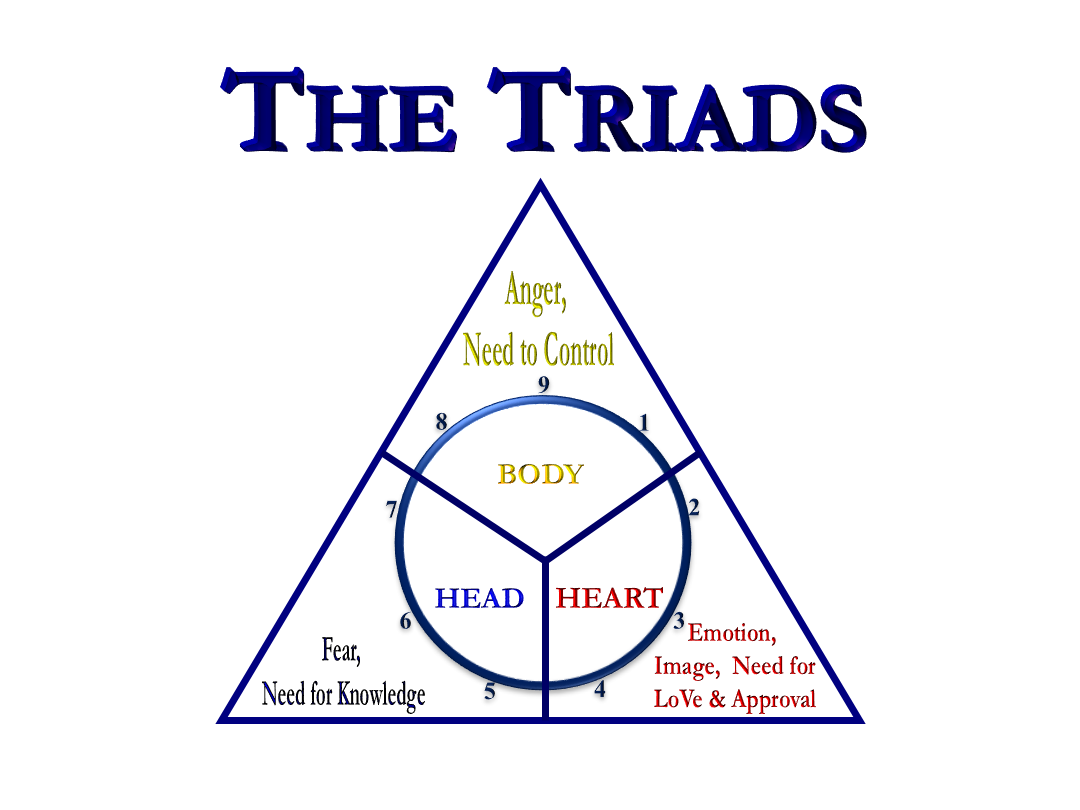WHAT IS THE ENNEAGRAM
“Do I really exist?... Isn’t there a Greater Self, true and free, beyond my little illusory self? Isn’t there a better way to LiVe, and a means to reach this higher state?”
Louis Pauwels, Monsieur Gurdjieff
The Enneagram is an archetypal framework that offers in-depth insight to individuals, groups and collectives. Consisting of three centres of intelligence, nine main Enneagram types, 18 wings, three subtypes and Triadic styles, the Enneagram offers a rich map to personal development from an open systems perspective. It does not box in people, but rather opens a pathway to self-discovery and greater personal awareness.
As a framework, the Enneagram also speaks to the journey of integration and development in a profound way. It is able to uncover the uniqueness of each individual and his/her journey. It does not only reveal what holds an individual back, but also offers insights into the journey towards strength and liberation, connecting us to our strengths and higher selves.
The Enneagram is, therefore, a sense-making tool or a framework that enables the development of self-knowledge and meta-awareness.
STRUCTURE OF THE ENNEAGRAM
The Enneagram is composed of a circle enclosing a triangle and a star, creating a nine-pointed figure. The triangle represents the mystical law of Three, the Trinity, which identifies the three forces necessary for creation. These are the creative, preserving, and destructive forces. After the creation of an event, the law of Seven comes into play (octaves), represented by the star. This represents the progression of events as they materialize in the world.
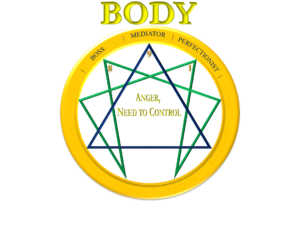
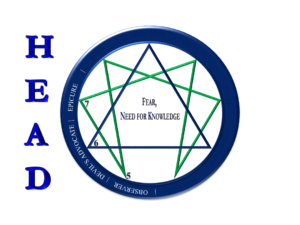
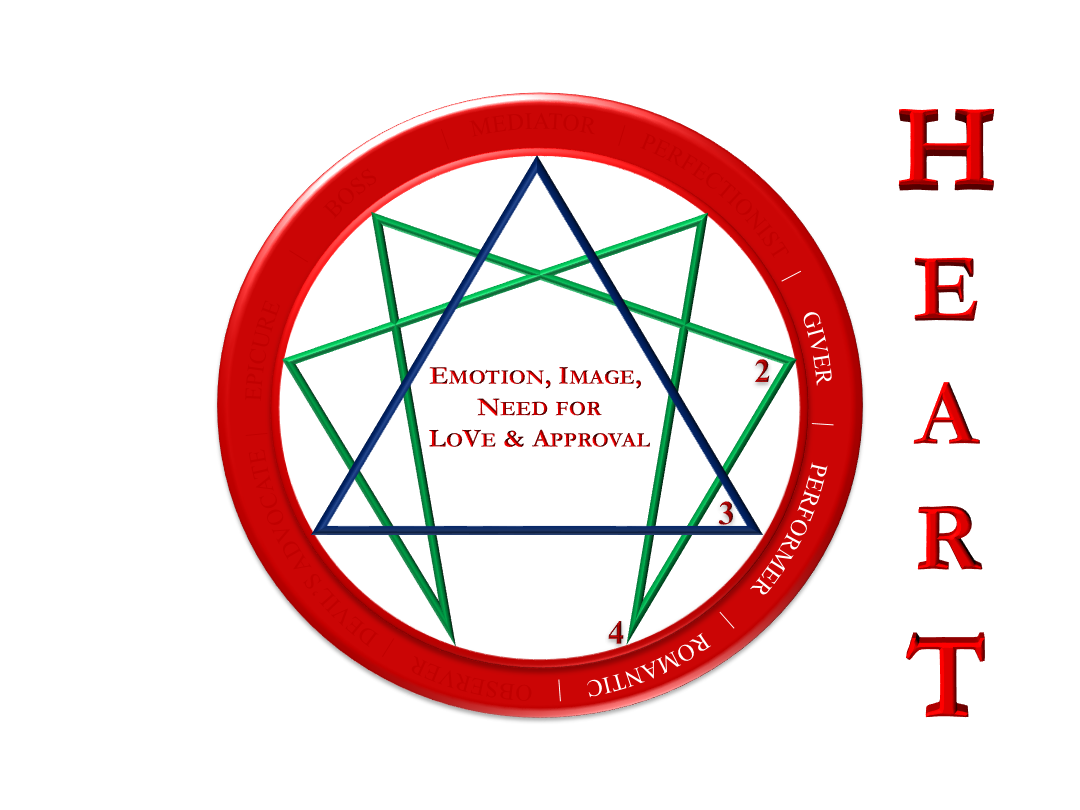
Gurdjieff’s work on the Enneagram referred to these mystical properties. Most of the modern work on the Enneagram focus instead on the psychological and spiritual aspects of the Enneagram as they manifest themselves in individuals.
HOW YOU CAN USE THE ENNEAGRAM
The purpose of the Enneagram is self-knowledge that can be used to further your spiritual growth, and your understanding and compassion of others.
This system can be applied for analysing and influencing unconscious strategies and behaviour of not only people but also organizations, cultures, and countries.
| INDIVIDUAL BENEFITS | TEAM BENEFITS | ORGANISATIONAL BENEFITS |
| Creates meta-awareness at the level of motivation | Reduces judgement and criticism of others while building understanding and tolerance | Decreases behind-the-scenes organizational politics |
| Increases consciousness and confidence | Provides a framework for making sense of team conflict and challenges | Improves change management and decreases fear of change |
| Enables clearing of core emotional issues | Enables the team to move beyond a pattern of blaming conflict on “personality differences” | Can unleash organizational creativity through greater individual integration |
| Provides a framework for understanding functional and dysfunctional behaviours that stem from core motivations | Repolarises teams while dismantling more traditional “fault lines” in the team | Improves productivity and performance |
| Increases compassion for self and others | Improves working relationships and team productivity | Creates a framework which enables greater project leadership |
| Uncovers pathways to development and integration | Enhances business procedures | Builds organizational integrity |
| Positions individual patterns and behaviours within current and historical context | Improves communication while also developing a new language framework for team dynamics | Enables more impactful corporate communication |
| Increases productivity and motivation | Contributes to development of talent | |
| Creates a language and sense-making framework that stretches deeper than a personality trait-based approach | Plays a role in enabling culture change | |
| Builds leadership authenticity, potency and impact |
INTRODUCTION
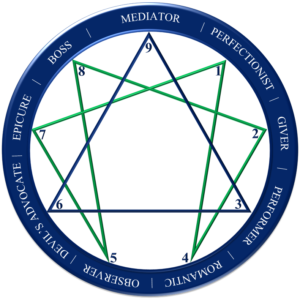 The Enneagram refers to the nine different types or styles, with each representing a worldview and archetype that resonates with the way people think, feel and act in relation to the world, others and themselves. It is much more than a personality profile that offers insight into core personality traits, as it delves deeper into the core motivations, defence mechanisms and fears that often lie in the unconscious layers of our personality structure. Your Enneagram core type is like a home base from which we make sense of individuation, integration and development. Other words used to describe the idea of ‘type’ include resonance, identification, lens, perspective or style.
It is important to keep in mind that different Enneagram styles may display similar behaviour. The Enneagram styles are not based on behaviour alone, and outward behaviour can be deceiving when exploring the Enneagram. To distinguish between styles, it is important to access motivation – to explore why a person chooses to act in a certain way and why acting in that way is valued by that individual.
The Enneagram refers to the nine different types or styles, with each representing a worldview and archetype that resonates with the way people think, feel and act in relation to the world, others and themselves. It is much more than a personality profile that offers insight into core personality traits, as it delves deeper into the core motivations, defence mechanisms and fears that often lie in the unconscious layers of our personality structure. Your Enneagram core type is like a home base from which we make sense of individuation, integration and development. Other words used to describe the idea of ‘type’ include resonance, identification, lens, perspective or style.
It is important to keep in mind that different Enneagram styles may display similar behaviour. The Enneagram styles are not based on behaviour alone, and outward behaviour can be deceiving when exploring the Enneagram. To distinguish between styles, it is important to access motivation – to explore why a person chooses to act in a certain way and why acting in that way is valued by that individual. ENNEAGRAM TYPE 1 – THE PERFECTIONIST
 Enneagram Ones value principles and integrity and are driven by the motivational need to be good and right. Their name comes from their striving for perfection and self-control. Integrity and quality will also be important to them. Ones tend to appreciate standards, principles and structure. At their best, Ones are tolerant, self-accepting and serene, offering dignity and discernment to themselves and the world around them. Less-healthy type Ones tend to be judgmental, uncompromising and pedantic, driven by a critical gaze and an acute awareness of their own imperfections and sense of not being good enough.
Self-Talk
“The world is imperfect and I must work towards improving it. I must be good/right/perfect and avoid mistakes. I must distinguish between right and wrong and apply myself diligently to make the world better”
The gifts of the Enneagram One include:
Enneagram Ones value principles and integrity and are driven by the motivational need to be good and right. Their name comes from their striving for perfection and self-control. Integrity and quality will also be important to them. Ones tend to appreciate standards, principles and structure. At their best, Ones are tolerant, self-accepting and serene, offering dignity and discernment to themselves and the world around them. Less-healthy type Ones tend to be judgmental, uncompromising and pedantic, driven by a critical gaze and an acute awareness of their own imperfections and sense of not being good enough.
Self-Talk
“The world is imperfect and I must work towards improving it. I must be good/right/perfect and avoid mistakes. I must distinguish between right and wrong and apply myself diligently to make the world better”
The gifts of the Enneagram One include:
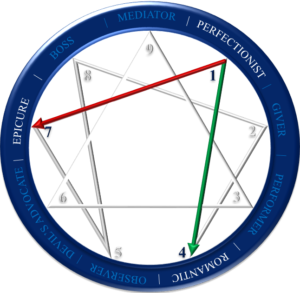
- Principled: Ones value integrity and want to lead by example. They stand for what is right and good.
- Objective: Ones are able to see and judge details, people and situations objectively, without emotion.
- Conscientious: Reliable and responsible, Ones stick to their word and diligently see things through to the end.
- Structured: Ones enjoy opportunities to structure things and are naturally adept at organizing, prioritising and creating order.
- Quality-minded: Ones have a knack for detail and will pay attention to quality standards and the application of rules and procedures.
- Ones may appear critical or impatient even when they are trying to be constructive in interactions with others.
- Ones may be unaware of how irritation, anger and resentment show up in body language despite their best efforts towards controlling and repressing these emotions.
- When feeling righteous about an issue, Ones may struggle to move from this righteous position to accepting that others may also have a valid, different perspective/response.
 |
 |
 |
 |
ENNEAGRAM TYPE 2 – THE GIVER
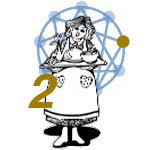 Enneagram Twos have a motivational need to be liked and appreciated. Twos value relationships and as a result kindness, generosity and self-sacrifice are important to them. Twos strive to make the world a more loving place, primarily by offering support and attention to those they care about. At their best, Twos are unconditionally supportive, able to practise self-care and offer the gift of humility to themselves and the world around them. Less-healthy Twos may seem flattering and manipulative as they ‘give to get’, motivated by a deep belief that they don’t deserve to be loved for who they are.
Self-Talk
“People depend on me for help. I must earn the love and appreciation of others by being there for them. I am only worthwhile if I am liked and needed. I deserve love because I am loving.”
Enneagram Twos have a motivational need to be liked and appreciated. Twos value relationships and as a result kindness, generosity and self-sacrifice are important to them. Twos strive to make the world a more loving place, primarily by offering support and attention to those they care about. At their best, Twos are unconditionally supportive, able to practise self-care and offer the gift of humility to themselves and the world around them. Less-healthy Twos may seem flattering and manipulative as they ‘give to get’, motivated by a deep belief that they don’t deserve to be loved for who they are.
Self-Talk
“People depend on me for help. I must earn the love and appreciation of others by being there for them. I am only worthwhile if I am liked and needed. I deserve love because I am loving.”
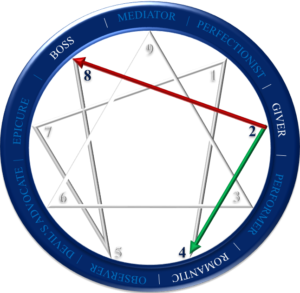
- Warm: Their demonstrative and warm nature makes it easy for others to connect with Twos and they are generally very likeable.
- Giving: Twos are caring and have the capacity to anticipate the needs of others, generously giving of themselves to others.
- People-Centred: The Two’s focus on building relationships will impact positively on their capacity to step into roles where client and people relationships matter.
- Sacrificing: To support and be there for others, Twos will put their own needs and feelings on the backburner.
- Praising: Being around complimentary, supportive Twos can make people feel very special, giving them a confidence boost.
- Twos may not be aware of the subconscious or hidden intention behind their generosity, caring and supportive activities. Being helpful may mask deeper motivations.
- Twos may pay attention to people and then disengage quite quickly once they lose interest in them.
- Their attention may become confused when Twos are trying to be helpful to more than one person with different needs.
- The Two’s focus on others may cause them not to be consistently tuned into their own needs and desires.
 |
 |
 |
 |
ENNEAGRAM TYPE 3 – THE PERFORMER
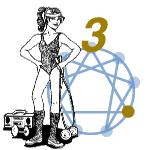 Enneagram Threes are likely to value achievement and want to be the best. As a result, efficiency, results, recognition and image are very important to them. Threes strive for success in their chosen field and tend to be highly flexible and willing to adapt to achieve their goals. At their best, others will experience Threes as hard-working, principled and receptive, offering the gifts of hope and integrity to the world. In an unhealthy state, the Three’s over-expressed need for achievement may seem self-important and inconstant. This stems from a sense of self-worth that is built on what the Three does, rather than who they are.
Enneagram Threes are likely to value achievement and want to be the best. As a result, efficiency, results, recognition and image are very important to them. Threes strive for success in their chosen field and tend to be highly flexible and willing to adapt to achieve their goals. At their best, others will experience Threes as hard-working, principled and receptive, offering the gifts of hope and integrity to the world. In an unhealthy state, the Three’s over-expressed need for achievement may seem self-important and inconstant. This stems from a sense of self-worth that is built on what the Three does, rather than who they are.
Self-Talk
“The world values winners. I must succeed at all costs. I must avoid failure. I am what I do – to earn my place, I must be the best at what I do.”
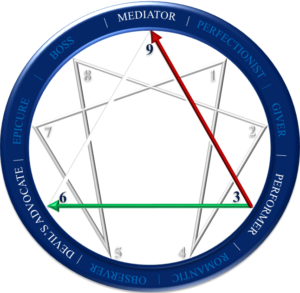
The gifts of the Enneagram Three include:
- Ambition: Threes are ambitious and have the will and energy to strive to be the best at whatever they take on. They believe in their ability to succeed.
- Efficient: The resourceful Three knows how to do things in a way that is efficient and productive.
- Adaptable: Along with being willing to adapt to achieve their goals, Threes are able to adjust to different situations, people or environments skilfully.
- Driven: The Three’s high energy and enthusiasm for projects gets things done and pushes others to perform as well.
- Results-Oriented: Setting goals and applying themselves to achieve these are as natural to Threes as breathing. They are focused on the end-result.
Typical Action Patterns:
As a “doer” and goal-directed type, Threes focus on the task at hand and are energetic in working towards their goals. The adaptive Three is often referred to as the “chameleon” as they change their persona and adapt their role, behaviour, communication and presentation to suit the audience they are trying to impress. The competitiveness of the Three will come to the fore at work and in recreational activities. Some Threes are very drawn to activities that allow for individual competition and achievement, while more social Threes are drawn to winning teams. In a team environment, the Threes may find themselves drawn to leadership roles and others are likely to experience them as very energetic and confident. They dress for success and will make sure that the way they look serves their purpose, ambitions and audience.
Typical Thinking Patterns:
Threes are likely to be very adept at framing mistakes and failures as “learning opportunities”, allowing them to quickly move on from these failures rather than dwelling on them and taking the setbacks personally. They find it easy to connect to data that supports their point of view, while other information will quickly fade away. As an intellectually calculating individual, the Three’s mental energy is focused on their goals and what it takes to achieve them. Their thought processes are likely to be quick, enabling them to adapt to changing situations rapidly. Threes frequently “assess” or read the situation to ensure that they are acting, engaging and communicating in a way that will enhance the chances of success. The Three’s competitiveness is linked to their habit of mentally comparing themselves to others, leading to feelings of being better than or worse than others. Threes tend to over-identify with their work, whether that work is corporate, parenting or creative, to the point that what they do defines who they are.
Typical Feeling Patterns:
Threes are good at detaching from their emotions, to prevent feelings getting in the way of achievement. They prefer to set emotions aside and will seldom have any time for self-reflection or talking about feelings, especially feelings that relate to anxiety, sadness and fear. While sad and anxious feelings are present in the Three, they find it easier to connect to frustration and anger. Threes are unwilling to risk the good opinion of influential people and so if the people involved are key to success, the Three will struggle to fully connect to these frustrations. A lot of a Three’s feeling centre will focus on how other people are reacting to them. Their optimism is projected outwardly, but on the inside Threes may be feeling more distrustful than their positive behaviour reveals to others. Projecting confidence is very important to Threes, who want to look confident and will mask feelings that may detract from this image. Others are therefore likely to experience Threes as unmoved, focused and even somewhat serious. Under continued pressure or when faced with the possibility of failure, Threes are, however, likely to become more short-tempered and snappy.
Blind Spots
- Threes are very aware of presentation and image, and this can become self-deceptive when they start believing their own PR. In over-identifying with their public image, Threes may lose touch with who they really are and create confusion between the real self and their job or role in the world. Others may also tune into this, experiencing Threes as insincere, opportunistic and uncaring.
- The Three finds it difficult to discuss negative issues and will often rush or dismiss such conversations. This will be particularly true if the criticism points towards mistakes and shortcomings.
- Strong goal-orientation and drive may lead to others experiencing the Three as impatient, rushed and dismissive – behaviours which will be intensified when the Three is dealing with people that come across as incompetent and may make them “look bad”.
- A Three’s confidence can be projected as certainty. Whereas certainty easily seems like a good thing, it can seem dismissive of alternative perspectives, thereby keeping people out of a conversation. It may decrease their openness to the Three’s inputs, plans and goals.
Famous 3's
 |
 |
 |
 |
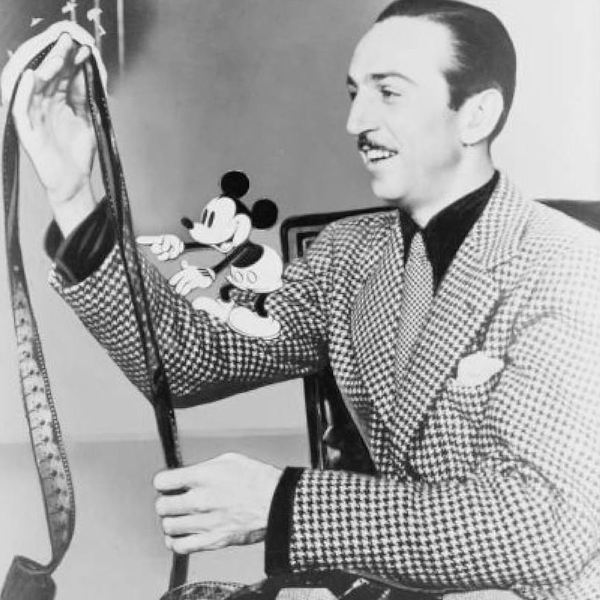 |
ENNEAGRAM TYPE 4 – THE ROMANTIC
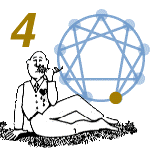 Enneagram Fours have the motivational need to express their uniqueness and be authentic. Fours value individualism and as a result, feelings, self-expression and purpose will be important to them. They are quite romantic at heart and appreciate beauty and creating meaning for themselves and for others. At their best, Fours are experienced as sensitive yet content. They offer the gift of equanimity and authenticity to themselves and the world. A less healthy Four may feel misunderstood, while others experience them as melancholic and temperamental. This pattern stems from the Four’s acute awareness of their own wounds and flaws.
Enneagram Fours have the motivational need to express their uniqueness and be authentic. Fours value individualism and as a result, feelings, self-expression and purpose will be important to them. They are quite romantic at heart and appreciate beauty and creating meaning for themselves and for others. At their best, Fours are experienced as sensitive yet content. They offer the gift of equanimity and authenticity to themselves and the world. A less healthy Four may feel misunderstood, while others experience them as melancholic and temperamental. This pattern stems from the Four’s acute awareness of their own wounds and flaws.
Self-Talk
“Something is missing – I must find what is missing in my life. I must be true to my purpose and express my authentic self. I must create beauty and meaning for myself and for the world.”
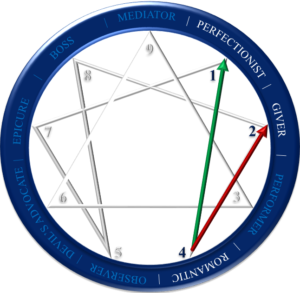
The gifts of the Enneagram Four include:
- Self-Aware: Fours are aware of their own emotions and those of others and seek to understand these emotions. This enables them to connect deeply.
- Purpose Driven: Being attuned to what has meaning and purpose drives Fours to express their personal purpose and contribution to the world.
- Inspired: Their creative and imaginative capacity enables Fours to give unique expression to what matters to them.
- Sensitive: Fours are able to recognise what is missing and will dive into the heart of matters. Their feeling-based intuition enables them to be highly attuned to the environment.
- Courage: Fours don’t shy away from suffering and the more painful aspects of the emotional world, and this gives them the courage to ask difficult questions.
Typical Feeling Patterns:
Fours are very connected to feelings, both their own and the emotional undercurrents in their environment. They are generally very aware of other people’s feelings, sometimes more so than others are themselves. This type tends to dwell and hold on to their emotions intensely and others may find them moody, deep and intense. Fours believe in exploring the full spectrum of emotions, from joy to deep sadness and they may shift between these emotions as their world and experiences change. They resonate powerfully with emotions like loss, sadness and longing, which may lead to cycles of melancholy. Fours tend to take life very seriously and can benefit from accessing the light-heartedness of their development line to Seven.
Typical Action Patterns:
Fours enjoy delving deeply into their life and love sharing profound experiences with others. Many actively invite ritual as a way of creating meaning in their lives. Their search for inspiration, symbolism and meaning may create a strong relationship with artistic expression or appreciation of the arts. When Fours are engaged with mundane or uninspiring tasks, they are likely to feel disenchanted and frustrated. Fours go to great lengths to talk about their feelings and experiences in an authentic way and most enjoy telling personal stories. This may only be with a select few, but could also be with a broader audience. Their conversations also contain a significant amount of personal “I, me, my, mine, myself” language and are aimed at establishing connections with others.
Typical Thinking Patterns:
The Four type is characterised by a sense of lack and envy, focused on and longing for what is missing either within themselves or in their lives. Fours are very adept at internalising and believing negative information about themselves. They are very likely to discard positive data. This internalisation of critical information can make Fours highly reactive to anything that seems to imply something negative about them. Fours’ personal experiences and feelings may bias their view of the facts, leading to subjective rather than objective decision-making. They tend to trust their own feelings and experiences more than anything else. Fours are very introspective and tend to be dissatisfied with the ordinary, everyday reality. They may become broody in the thinking process and get lost in negative thought-patterns that erode their self-esteem, making them long to be understood.
Blind Spots
- Fours want to have meaningful and deep relationships but will often act in ways that reflect their need to feel different, special and separate. This may lead to them both pulling people close and pushing them away, especially if the Four feels rejected or disappointed. The net effect may lead to people withdrawing from them.
- Fours may also focus on what is missing, desiring what they don’t have and rejecting what they do have. This alternating focus reinforces their feelings of loss and emotional sensitivity.
- Fours may not be aware of the extent to which they self-reference in conversations. Even though the Four desires to draw people close by doing so, others may experience this as self-absorbed.
- This type is likely to be triggered if people don’t fully complete a conversation or don’t give them the time they are requesting. Fours often feel the need to continue with conversations even when others are no longer interested in discussing a matter.
- In believing that others share their preference for discussing emotions and feelings and seeking emotional closure, Fours may dwell on this too much. This could lead to others experiencing the Four as overly dramatic and intense.
Famous 4's
 |
 |
 |
 |
ENNEAGRAM TYPE 5 – THE OBSERVER
 Enneagram Fives have the motivational need to know and understand. Fives value making sense of the world around them and, as a result, objectivity and knowledge are important to them. Fives strive for independence, appreciate privacy and tend to conserve their resources to ensure future independence. At their best, others will experience Fives as visionary and mindful. They offer the gift of non-attachment to themselves and the world. At their worst, others may experience a Five as stingy, intellectually arrogant and disconnected from their heart, as they retreat into their mind to avoid being engulfed or intruded on.
Enneagram Fives have the motivational need to know and understand. Fives value making sense of the world around them and, as a result, objectivity and knowledge are important to them. Fives strive for independence, appreciate privacy and tend to conserve their resources to ensure future independence. At their best, others will experience Fives as visionary and mindful. They offer the gift of non-attachment to themselves and the world. At their worst, others may experience a Five as stingy, intellectually arrogant and disconnected from their heart, as they retreat into their mind to avoid being engulfed or intruded on.
Self-Talk
“The world is intrusive; I must protect my resources and energy so that I can think. I must be self-sufficient and not depend on others too much. I must understand and make sense of my world. I don’t need much but I need my space.”
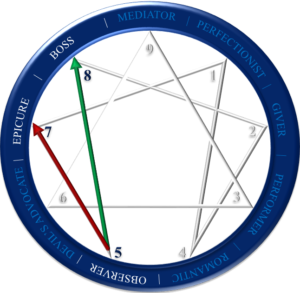
The gifts of the Enneagram Five include:
- Perceptive: Fives offer objective, in-depth and insightful observations of situations and information. They are able to hold complex problems and data.
- Curious: Their interests and intellectual ideals enable Fives to explore and build expertise in a variety of fields, topics and theories.
- Unsentimental: Fives approach life in an unsentimental way and can put emotions aside when needed.
- Self-Sufficient: The independent Five will protect their autonomy and privacy. They prefer to ask little of others and are able to minimise their own needs.
- Inventive: Fives’ unconventional ideas and depth of knowledge enable them to be inventive, visionary and pioneering.
Typical Action Patterns:
Fives enjoy spending time alone and are never bored when doing so. They place a very high premium on privacy, although what they consider ‘private’ is a personal definition. Their private time is time to recharge and build up their resources, which enables Fives to set clear boundaries and limits. Independence and autonomy are extremely important to Fives, who would prefer to scale down or do without rather than having to increase dependency on others. This may lead them to adopt a frugal and minimalist lifestyle, or can also lead to hoarding. Fives generally work very carefully with resources. In social settings, Fives may be quite withdrawn unless a topic relates to their field of expertise. They are then more inclined to sharing a great deal of information with others.
Typical Thinking Patterns:
Fives are very cerebral in their orientation and believe that knowledge is power. They have a hunger for knowledge and understanding that leads them to explore information in great depth. They may have a voracious appetite for information on certain topics and enjoy building real expertise and wisdom based on these. The mind is their refuge and detachment, objectivity and reliability are important to Fives. They have the ability to categorise information, events and people into partitions in their mind. This enables them to keep various interests separate and creates very strong boundaries between different aspects of their life and relationships.
Typical Feeling Patterns:
Fives tend to intellectualise feelings and trust their mind to make sense of what they are experiencing on an emotional level. Their preference for the objective may make it difficult for Fives to differentiate between thoughts and feelings. Fives are easily drained by emotionally charged situations and open-ended events or projects. Their thinking often reflects tiredness, largely from a relentless managing of personal energy and resources. Their ability to detach from emotions happens almost automatically and instantly in the moment and Fives will then relive and review these feelings when they choose to do so. This extreme form of detachment is normally a habitual pattern fuelled by the need to take control of emotions. Detachment is a way of protecting against the pain of emotions and Fives may become so detached that they disengage from life or appear cold to others.
Blind Spots
- For a Five, the ability to detach from feelings and practice objective thinking may come at the expense of interpersonal warmth. Even when Fives feel warmth, this may not be readily apparent to others.
- In trying to explain information and share expertise, Fives may come across as patronising or haughty. This may shut people down and makes it difficult for them to understand and pay attention to what the Five is trying to say.
- In relationships, commitment does not come easily to a Five. In committing to a relationship it may feel as if they have to open themselves to the pain of the relationship, whereas solitude is not painful. This can lead to subconscious patterns of thinking in which relationships and commitments are equated with pain and struggle and cycles of wanting contact and wanting to be alone.
- Fives are fiercely protective of their time and resources, essentially hoarding them. This may seem like prudence to the Five, but may be regarded as greed by others.
Famous 5's
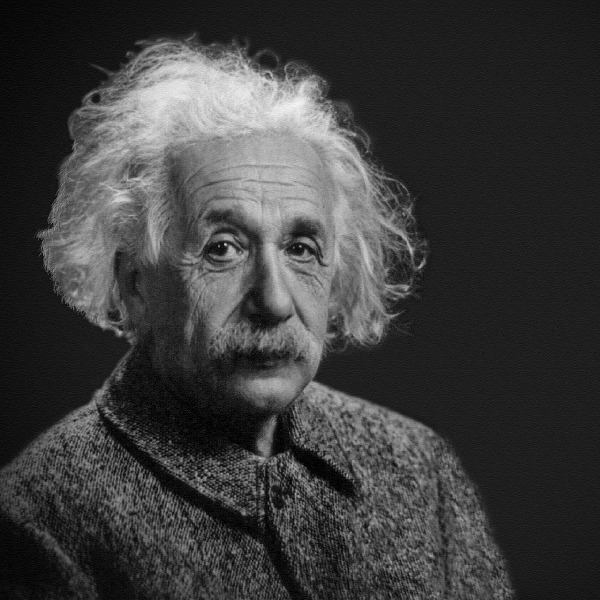 |
 |
 |
 |
ENNEAGRAM TYPE 6 – THE DEVIL’S ADVOCATE
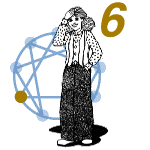 Enneagram Sixes value security and belonging, as this style stems from the motivational need to be safe and prepared. As a result, loyalty and trust are important to Sixes, who strive to be responsible and prepared at all times. At their best, Sixes are courageous and connected to a sense of inner knowing, offering the gift of devotion and trust to themselves and the world around them. Less-healthy Sixes have a tendency to worry excessively, fear letting down their defences and may be experienced as anxious, suspicious or doubting.
Enneagram Sixes value security and belonging, as this style stems from the motivational need to be safe and prepared. As a result, loyalty and trust are important to Sixes, who strive to be responsible and prepared at all times. At their best, Sixes are courageous and connected to a sense of inner knowing, offering the gift of devotion and trust to themselves and the world around them. Less-healthy Sixes have a tendency to worry excessively, fear letting down their defences and may be experienced as anxious, suspicious or doubting.
Self-Talk
“The world is a threatening and unsafe place. Be prepared. Be loyal. People can count on me. Be careful who you trust. I must not be afraid, but I must not let my guard down. I must protect myself, but I must be loyal.”
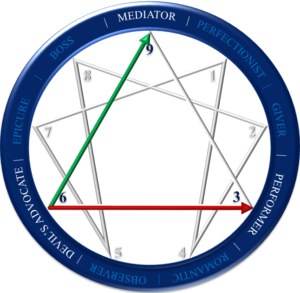
The gifts of the Enneagram Six include:
- Devotion: Sixes are committed to what they value, expressing duty and care in service of people, responsibilities and causes.
- Courage: Sixes often courageously take a stand on behalf of the greater good, despite concerns and risks.
- Preparedness: Being alert and risk-aware, Sixes pay attention to what is going on in their world and act to minimise risks and threats.
- Trustworthiness: Once Sixes make a decision or commitment, they stick to it. They also respect rules and authority, as long as they feel like they can trust the source or intention.
- Team-Oriented: Sixes enjoy the co-operation and collaboration of groups and thrive in a healthy team environment.
Typical Action Patterns
There are two ways in which the Enneagram 6 pattern manifests. If it manifests as the phobic pattern, the Six is likely to be very hesitant and cautious as they try to avoid anxious situations and guard against the risk of things going wrong. If it manifests as the counter-phobic pattern, the Six tries to work through anxiety by meeting fearful situations head-on. Most Sixes fall between these two extremes and will move between these tendencies depending on the circumstances and their life context. Most Sixes show some form of risk-taking behaviour as a way of proving to the world and to themselves that they are not afraid. These behaviours may vary from verbal acts of courage to extremely high risk activities. Sixes with a strong counter-phobic pattern are likely to display these activities more frequently than those who have a more phobic pattern. Sixes are known for their ability to work with consistency and with dedication over time. As they take responsibility very seriously, they tend to fully commit to the job or task at hand and demonstrate loyalty and courage.
Typical Thinking Patterns
In their desire to avoid problems, Sixes tend to apply themselves to potential risks and threats in a highly analytical way. This also makes them very attuned to their environment, scanning for possible problems and challenges. Sixes are able to solve and prevent problems, but may also be very sceptical of solutions that seem too easy or simple. This “yes, but” pattern can lead to frequently and overtly challenging both solutions and authority. Sixes are very aware of authority in their thinking. While they hope to have the support and protection of people in authority, they are also very wary of being let down, disappointed or betrayed by those very same people. The Six’s internal dialogue is likely to follow a process of asking lots of questions of themselves or consulting an ‘internal committee’. They ask questions not only about what is obvious and readily apparent, but also about what is unexpressed and hidden.
Typical Feeling Patterns
Sixes are very familiar with feelings of anxiety and tend to focus on worst-case scenarios in everyday life. These feelings could range from unease, concern and mild worry to panic, dread and terror. As an emotionally reactive style, Sixes have immediate and easy access to their feelings but will also replay concerns and anxieties over time. Even though they are pleased when things go well, Sixes tend not to dwell on positive emotions too much. Sixes tend to project their feelings onto others without necessarily testing them, as an unconscious behavioural pattern. In a bid to manage anxiety, the Six tends to project their own feelings, thoughts, hopes and fears onto others, thereby negating their impact on the Six. They often resist and challenge people because of their own doubts.
Blind Spots
- Sixes constantly focus on the things that can go wrong, therefore, their tentative and cautious approach may seem to others like stubbornness, pessimism and negative behaviour.
- Sixes tend to worry a lot about what might happen and their ability to deal with it, which can lead to seeming insecure. Others may then doubt the ability of the Six to take care of things. This questioning of their ability is what the Six is trying to avoid, yet their cautious approach may create just that.
- Despite being very focused on loyalty and issues of trust, the Six is naturally inclined towards scepticism and wondering whether people can be trusted. This may impact negatively on their interactions and relationships. By focusing on trustworthiness so much, Sixes make it difficult for people to consistently trust them.
- Projection is a core issue for the Six. Projecting fears onto the people around them may be a way to avoid owning their own emotions, concerns and worries.
Famous 6's
 |
 |
 |
 |
 |
ENNEAGRAM TYPE 7 – THE EPICURE
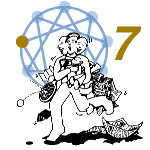 Enneagram Sevens have the motivational need to experience life to the fullest and avoid pain. Sevens value a sense of freedom and focus on optimism, being inspired and taking opportunities as they present themselves. Sevens approach life as an adventure and appreciate being playful and spontaneous. At their best, others will experience Sevens as content and serene, when they are able to embrace sobriety and become present to themselves and the world around them. At a less healthy level, others may experience Sevens as impulsive, uncommitted and unfocused as they are distracted by their insatiable search for fulfilment and a fear of missing out.
Enneagram Sevens have the motivational need to experience life to the fullest and avoid pain. Sevens value a sense of freedom and focus on optimism, being inspired and taking opportunities as they present themselves. Sevens approach life as an adventure and appreciate being playful and spontaneous. At their best, others will experience Sevens as content and serene, when they are able to embrace sobriety and become present to themselves and the world around them. At a less healthy level, others may experience Sevens as impulsive, uncommitted and unfocused as they are distracted by their insatiable search for fulfilment and a fear of missing out.
Self-Talk
“The future is full of exciting possibilities and I must experience it all! I’m ok; I deserve what I want. What’s next? I must move forward; I must have my freedom.”
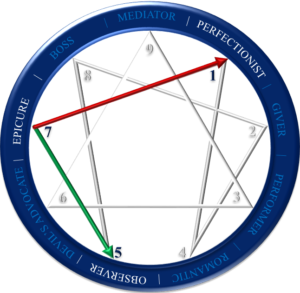
The gifts of the Enneagram Seven include:
- Optimistic: The Seven’s focus on what brings joy, happiness and pleasure to life enables them to exude optimism.
- Flexible: As Sevens are attuned to possibilities and like to keep their options open, they will be adaptable in the face of change, setbacks and challenges.
- Future-Oriented: By focusing on what is next, the Seven’s enthusiastic and visionary qualities enable them to both anticipate and create an exciting future.
- Practical: At their best, Sevens combine their ideas with a practical and productive focus that enables them to make things happen.
- Adventurous: As a playful, versatile and spontaneous person, Sevens savour their freedom and like to explore new territories and experiences.
Typical Thinking Patterns:
Sevens have an active mind that moves between and connects ideas with ease. This type wants to devote their energy and time to the things that interest them, and responds instantaneously to stimulation. The Seven thinking style, therefore, combines quick mental processing with a high need for mental stimulation. They want options and hate feeling that their choices are being limited or that they are being constrained in some way. The Seven thinking style allows them to accumulate a breadth of knowledge across a wide variety of fields. This generalist knowledge can enable creativity and innovation as they have an abundance of knowledge to connect and draw on. Sevens are stimulated by their ability to generate and share a multitude of ideas with others. When they encounter new information, they will process and integrate it quickly, often learning as they go along and in the “doing”.
Typical Action Patterns:
Sevens get bored easily and mundane or repetitive tasks can get them down. They will, therefore, actively seek excitement and try out new things, often leaving tasks unfinished as they initiate something new. Sevens want to create momentum in life and act decisively to keep things moving forward. They enjoy the rush of adrenalin that comes with excitement and trying something new. Under pressure Sevens will multitask, juggle plans and may be inclined to take on more than is realistic. The body of the Seven is probably just as active as the mind. This embodiment of energy may manifest as busy body language and constant movement – most Sevens dislike sitting still for more than a couple of minutes. To others it may seem as if Sevens are restless, always juggling tasks or on their way somewhere else.
Typical Feeling Patterns:
Sevens resonate with the positive side of the emotional landscape and their expression of themselves will mostly be upbeat and energetic. Others are likely to experience Sevens as joyous, optimistic and enthusiastic. When Sevens experience or tune in to uncomfortable and negative emotions such as anxiety, boredom, fear or sorrow, their instinctive response is towards positive possibilities and plans for the future. This allows them to escape and override discomfort. Sevens may also be quite adept at “reinterpreting” negative experiences to frame them as positive opportunities or learning experiences. This form of rationalisation can make it difficult for a Seven to take full personal responsibility when things go wrong, but also helps keep them on a positive track. Sevens don’t like having their abilities questioned and can become angry when people do so. They are likely to actively work to shift the mood towards something more positive and lighter when things get heavy, or try to lighten the mood by telling jokes.
Blind Spots
- The Seven is very quick to synthesise and learn new information and skills. They may, however, overestimate the extent to which they have truly mastered and absorbed this knowledge. They may position themselves as an “instant expert” without having the depth of knowledge that is required for true expertise. This may lead people to question their capability and authenticity.
- The Seven needs to be active and engaged and their highly active body language, communication style and thoughts may be stimulating to them, but can be distracting and frustrating to others. If their style results in fidgeting or pacing, people may not properly pay attention to their ideas. The Seven may not be aware of the extent to which this impacts others and group processes.
- Their active and quick mind may lead Sevens to assume that they know what other people are going to say. As a result, they may not listen fully to what people are really saying.
- Sevens may want to feel totally accepting of themselves, but constantly avoid the things that will enable them to feel this way. In rationalising mistakes, moving towards positive emotions and seeking excitement, Sevens may be keeping themselves from experiencing themselves as whole.
- Sevens may mask fear and unwillingness by expressing and tuning in to boredom. When they feel terrified about something, they may end up tuning in to the ways in which this opportunity will limit them to avoid facing their fears.
Famous 7's
 |
 |
 |
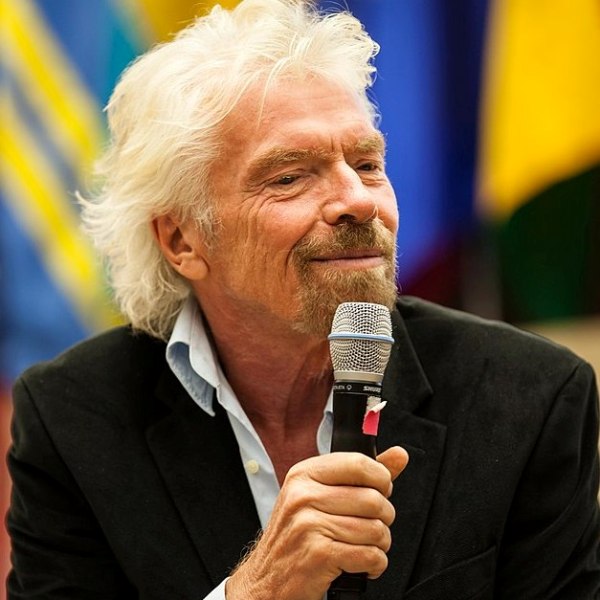 |
 |
 |
ENNEAGRAM TYPE 8 – THE BOSS
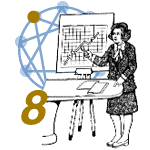 Enneagram Eights have a motivational need to be strong and avoid showing vulnerability. They value having a sense of control and being direct and impactful. Eights love challenges and will embody a need for justice which enables them to protect others. Healthy Eights are experienced by others as strong, deeply caring and approachable. They offer the gift of innocence to themselves and the world around them when they align with the flow of reality. At their worst, others will experience Eights as domineering, aggressive and lustful, an image that stems from the Eight strategy to express themselves as larger than life in a threatening world.
Enneagram Eights have a motivational need to be strong and avoid showing vulnerability. They value having a sense of control and being direct and impactful. Eights love challenges and will embody a need for justice which enables them to protect others. Healthy Eights are experienced by others as strong, deeply caring and approachable. They offer the gift of innocence to themselves and the world around them when they align with the flow of reality. At their worst, others will experience Eights as domineering, aggressive and lustful, an image that stems from the Eight strategy to express themselves as larger than life in a threatening world.
Self-Talk
“The world is a tough and unjust place – only the strong survive. I am a rock; I must not be weak. I must be in control. Do it my way!”
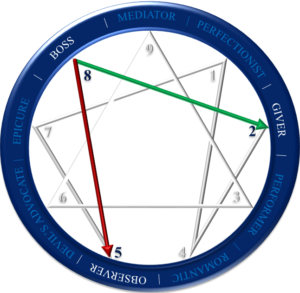
The gifts of the Enneagram Eight include:
- Assertive: Eights are confident and direct, say what they need to say and get on with things.
- Decisive: Eights are quick to respond and willing to make decisions. They trust their gut instincts and will move things forward.
- Protective: Under their toughness, Eights are bighearted and take people under their wing. They protect the people and things they care about and will fight against injustices.
- Independent: Self-sufficient Eights dislike being dependent on others and maintain their autonomy.
- Influential: Eights have their own way of taking charge and influencing others, which includes the capacity to influence the bigger picture.
Typical Action Patterns:
The Eight sits in the action centre of the Enneagram – acting on gut instinct and making things happen are, therefore, second nature to this type. Eights find it easy to influence the external environment and they tend to believe that almost any action is better than doing nothing at all. Eights project themselves as direct and intense. This is likely to come across through the way they speak, their choice of words, decision-making style and body language. They assert their independence and want to be able to choose to do things. Eights are less likely to co-operate out of a sense of obligation. Being in control is very important to an Eight, who will not only manage the big picture, but also micromanage. When under pressure or when others seem to be dropping the ball, Eights will quickly step in to sort things out. Having to micromanage irritates Eights and probably feels like a waste of time but to stay in control and ensure results, they will do what they have to do. Even though they dislike weakness and incompetence, Eights will be highly protective of people they feel responsible for. When people under their care are being exploited or treated unjustly, Eights will defend and protect them, as long as they don’t act like victims. They will pursue justice and will actively work to correct wrongs.
Typical Thinking Patterns:
Eights will tend to mentally assess people as either “strong” or “weak” and will treat them accordingly. This may lead to an “all or nothing” assessment of people and way of paying attention to others. Eights want to know the truth and dislike ambiguity. They are comfortable if the truth only comes to light in a conflict situation, as they want to know what is going on and hate being “out of the loop”. The more information they have about progress, updates and what is going on, the more the Eight is able to focus on the bigger picture. Eights don’t like getting involved in the detail as their preference lies in working on a macro- and big picture level with information. The mind of an Eight moves towards their own goals and needs more so than those of other people. They don’t respond well to being forced, bribed or charmed into doing something that they don’t want to do or seems dull and unimportant.
Typical Feeling Patterns:
Eights tend to be quick to anger and then try to channel this anger into immediate action. After having expressed their anger, Eights tend to be quick to move on. Emotions like sadness and fear make Eights feel vulnerable and weak. As they want to avoid feeling or showing weakness, Eights use denial as a defence mechanism to help not show weakness to others. Some Eights are aware of when these feelings are occurring, but will very rarely choose to show these feelings to others. Their softer emotions will only appear when the Eight feels safe. They express their love through protection and power.
Blind Spots
- Because their energy may be stronger than they realise, Eights may not be aware of how intimidating it may seem to other people. Contrary to what they believe, not just timid people may feel threatened and overawed in their presence. This may be the case even when they are holding back.
- Eights tend to move towards conclusions and action swiftly and decisively. Other people may need a lot more time to see the big picture and decide what to do about it. The force with which Eights initiate and drive may, therefore, leave people feeling unprepared or overwhelmed.
- Even though Eights may be working hard to keep their vulnerability from others, they may show it more than they realise, especially in moments of reflection or when anticipating future challenges.
- When people are unable to assert themselves or take control in a clumsy way, Eights will quickly take charge of situations. Their assessment that someone is weak may lead to them disregarding what others are saying or offering.
- Eights don’t react well to dishonesty or being blamed by others.
- Eights don’t conform to rules and hate any attempts at being controlled. At the same time, their tendency to take control assumes that others will comply and conform to them. This can create tension in relationships.
Famous 8's
 |
 |
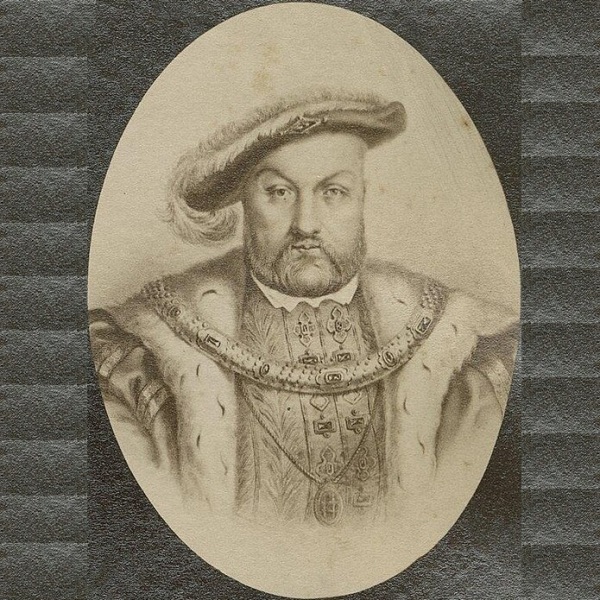 |
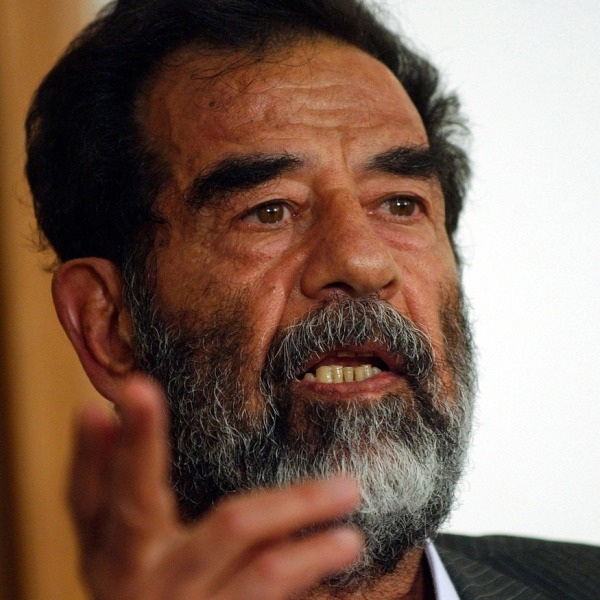 |
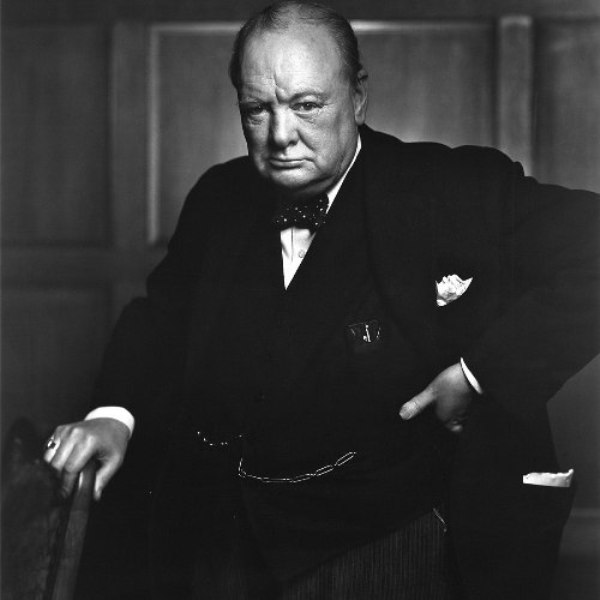 |
ENNEAGRAM TYPE 9 – THE MEDIATOR
 Enneagram Nines are motivated by a need to be settled and in harmony with the world and, as a result, being accommodating and accepting will be important to them. They strive for a peaceful existence and appreciate stability, preferring to avoid conflict. At their best, Nines are experienced as self-aware and vibrant. They offer the gift of right, sustainable action to themselves and the world around them. Less-healthy Nines may be experienced as procrastinating, stubborn and self-denying. This stems from a pattern of going along to get along with others and the eventual discomfort that arises when this strategy is not satisfying.
Enneagram Nines are motivated by a need to be settled and in harmony with the world and, as a result, being accommodating and accepting will be important to them. They strive for a peaceful existence and appreciate stability, preferring to avoid conflict. At their best, Nines are experienced as self-aware and vibrant. They offer the gift of right, sustainable action to themselves and the world around them. Less-healthy Nines may be experienced as procrastinating, stubborn and self-denying. This stems from a pattern of going along to get along with others and the eventual discomfort that arises when this strategy is not satisfying.
Self-Talk
“I am okay as long as the people around me are okay too. The world would be a better place if people could treat each other with respect. I must keep the peace; I must be tolerant and accepting; Can’t everyone just get along?”
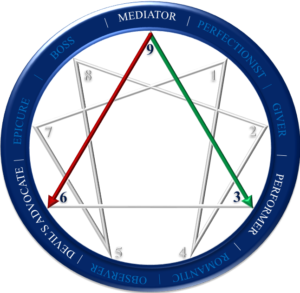
The gifts of the Enneagram Nine include:
- Agreeable: Nines are easy to get along with. Others experience them as open, receptive and peaceful.
- Understanding: Nines are able to listen to differences and understand multiple perspectives, with a great skill in synthesis and finding commonalities across differences.
- Patient: Nines do things in a calm, sustainable way, trusting the natural rhythm of projects and processes.
- Supportive: Others feel accepted, heard and understood in the presence of Nines. They accept people for who they are and see their full potential.
- Genuine: What you see is what you get with a Nine and they are unpretentious. Others can be at ease with them.
Typical Action Patterns:
Enneagram 9 is in the action centre of the Enneagram, but it is the conflicted archetype in this centre. Nines control their environment by not allowing others to control them, typically resisting in a passive way. Their actions, and frequently lack of action, will be focused on maintaining harmony and peace. Nines shun conflict. They create familiar rhythms and routines in their lives and draw comfort from this pattern of engagement with their tasks and environment. Nines want to feel connected and close to people, and this often leads to a “blending” of energy with the people closest to them. This may take the form of adopting the habits, hobbies, interests or even emotions of the people in their intimate space.
Typical Thinking Patterns:
Nines like structured processes, clarity and details and will, therefore, create procedures or habits very quickly. They are also likely to be adept at organizing large volumes of information or detail into a coherent structure. A Nine may be more hard-headed and stubborn than people who don’t know them may realise. They will rarely express the thoughts and self-talk that they engage in with others as they do not want to “subject” them to these thoughts lest it weighs them down. Nines may be resigned to being slightly dissatisfied with certain aspects of their life or relationships.
Typical Feeling Patterns:
Even though Nines experience a range of intense feelings, they project an even-tempered and easy-going demeanour. They will keep strong feelings to themselves, allowing others to experience the Nine as very approachable and serene, even though they may not feel this way internally. Because emotions seem really intense to the Nine and they long for harmony, they experience most emotions in the low to moderate frequency of intensity. Despite their ability to mediate in conflict situations, Nines dislike connecting with their own anger. Anger is an emotionally draining experience for Nines, who often take a while to notice that they are upset. They, therefore, don’t allow themselves to experience anger too often or too intensely. Nines “tune in” to the feelings and emotions of the people around them. If they are enthusiastic and energised, the Nine will share in this motivation and positivity. The same may happen when people around them are feeling down.
Blind Spots
- Nines avoid being controlled by others in a counter-intuitive way, by being passive, non-assertive and unmoved. This pattern of indirect behaviour may impact on their communication and relationships.
- Nines want to avoid being controversial. Despite disliking it when people pressurise them into something, they also have difficulty saying no to people. While Nines will go out of their way to accommodate others and downplay their own needs, setting themselves up to be overlooked, Nines dislike being ignored.
- Many Enneagram Nines are unaware of their own passive aggressive behaviour patterns and how these affect others around them.
- In pursuing their need to ensure that everyone is being heard, Nines often present multiple viewpoints in conversation with others. This may lead to drawn out, lengthy explanations that cause the listener to lose interest. It can also impact negatively on the Nine’s degree of influence and even credibility.
- In being diplomatic and accommodating, Nines may fail to make their true needs, desires and feelings known to the people around them. The Nine may feel that they are doing so very clearly, but due to their approach, others may miss what they really want and need. It may also be that these needs and feelings are only being articulated in the Nine’s head and not being shared with others as openly and frequently as they think.
Famous 9's
 |
 |
 |
 |
 |

HOW CAN WE ASSIST?
